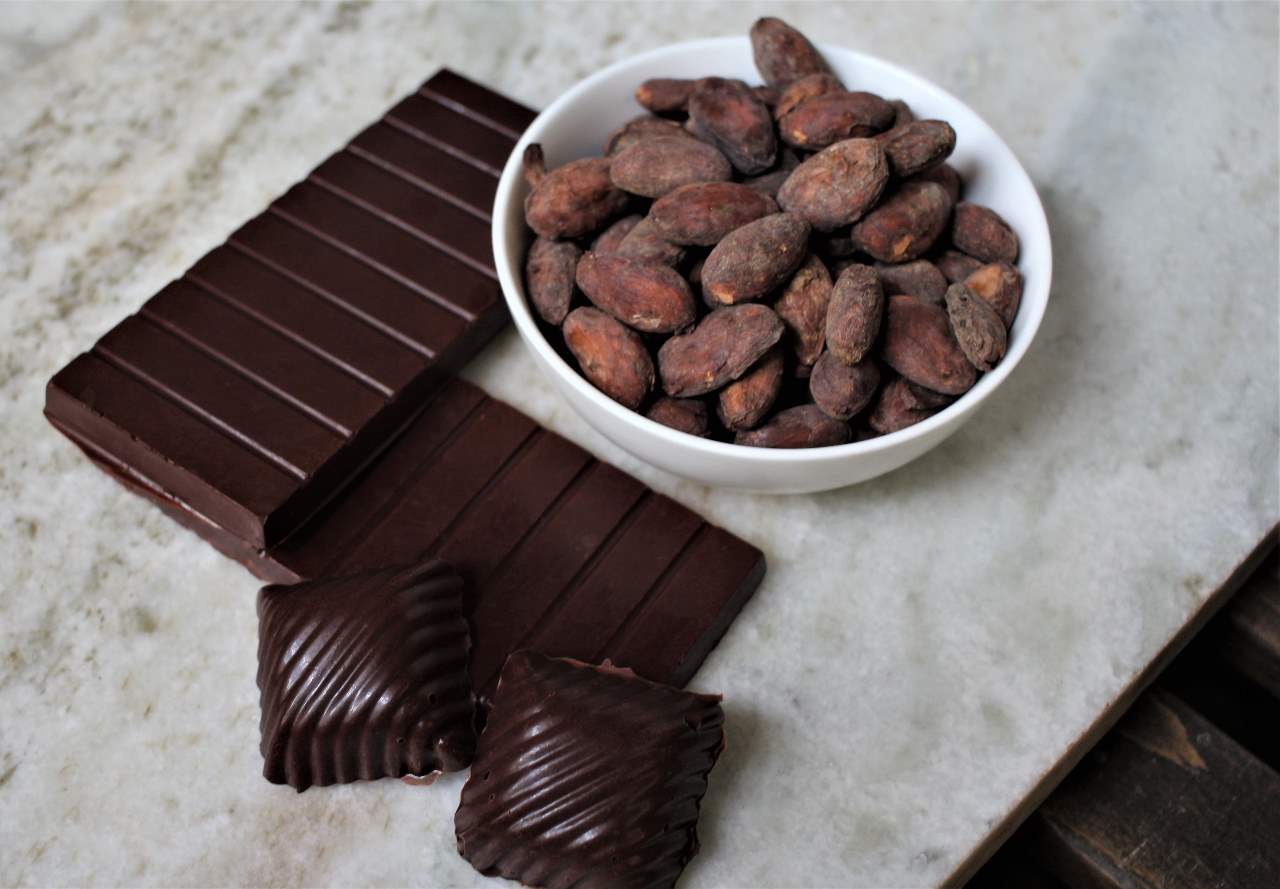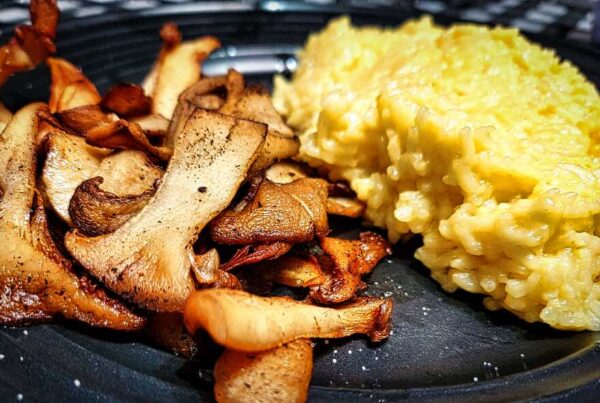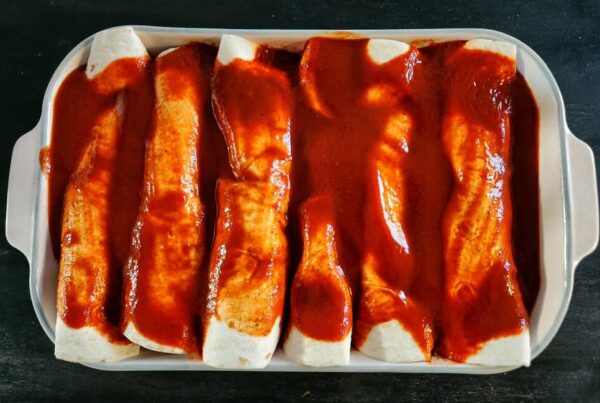This post is directed to those of you who love making (or want to make) small-batch chocolate. It will feature reviews of chocolate beans available for retail customers. Yes, I write for those of us who don’t have an entire garage dedicated to cacao beans. I will use regular words, as I have no background in fancy food tasting vocabulary. Additionally, I will provide information for oven-roasting as I don’t have Behmor coffee roaster* and know many readers do not either.
If you have not yet made your first batch of bean to bar chocolate, click here for detailed instructions. If you are looking for cacao reviews or more advanced tips, read on. Note: this post will be updated throughout the year as I experiment with roasting times and different origins of beans. Unless otherwise specified, roasting times reflect an oven temperature of 350 degrees. For all test batches I use one pound of beans spread out on a baking sheet. Completed chocolate contains 70% cacao and 30% sugar by weight.

Ivory Coast (2016)
Currently available here.
This was my first cacao purchase, as it was the cheapest option I could find and I knew I would probably mess up. The bag contained quite a bit of debris and malformed beans, which were easily picked out during initial weighing. My impression of the raw beans was a bitter, somewhat spicy scent. As noted in my original chocolate making post, beans roasted for 15 minutes took on a nutty, peanut-buttery flavor. The 17 minute batch tasted more earthy and with a hint of coffee. Overall, a good starter bean, although I would not call them my favorite.
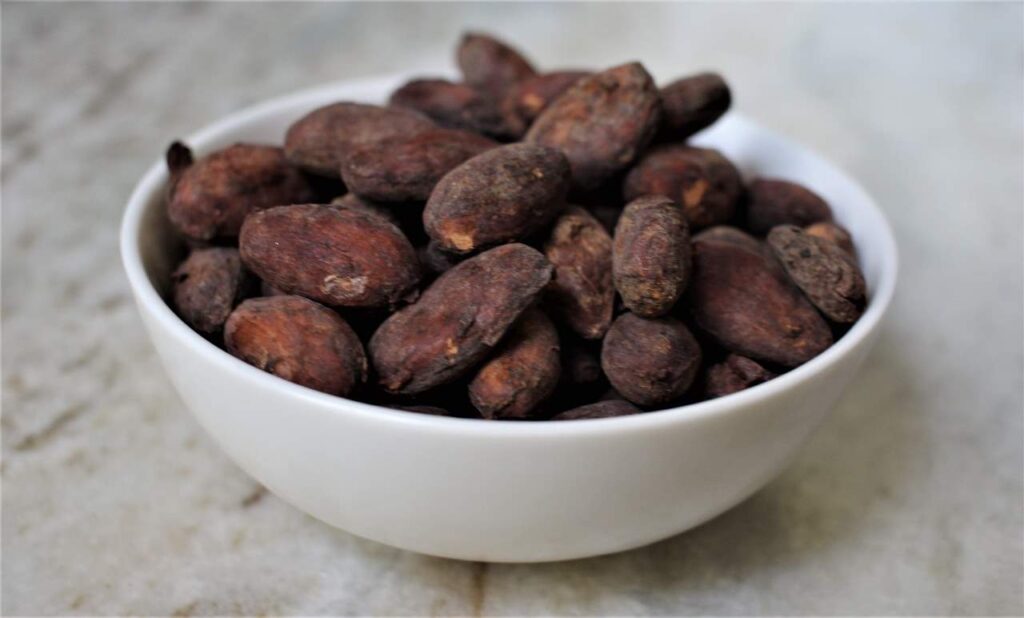
Ecuador Sofia (2019) Organic
Currently available here.
These beans surrounded me in a pleasant rich, creamy chocolate smell as soon as the bag was open. There was almost no debris mixed in with the beans, and the beans themselves were very clean. After roasting, the flavor was of very balanced, smooth chocolate with no one flavor standing out. All roasts (between 15 and 18 minutes) were delicious. Shorter roasts (15.5 min) tasted more like brownies, whereas longer roasts (18 min) gained a slight mocha taste. I would not say there is a bad batch here… these beans are absolutely delicious.
To Be Reviewed Next
Next on my list to review are the following beans: Uganda Esco Organic (2018/19); Ecuador Cayapas River 2020). Both of these beans are also from the Chocolate Alchemist.

Small-Batch Chocolate Making Tips
Roasting
- Stay by your oven in order to listen to and smell the progress of your roasting beans. Otherwise you may end up with a smoky kitchen and a wasted batch of beans.
- A full-sized oven is preferable to a toaster oven for temperature precision and reliability of taste results.
Winnowing
- A rubber mallet works far better for smashing cacao beans than a rolling pin, in my experience.
- If using a hair dryer to separate cacao nibs from shells, there is no need to wear perfume later in the day. You will smell strongly of chocolate.
Refining
- If you are going to spend money on any part of the chocolate-making process, I highly recommend a mini-melanger. It is nearly impossible to have smooth chocolate without one.
- Place your mini-melanger on a small carpet or rug if using inside to decrease noise.
- If utilizing a garage for this process, make sure disgusting smells are absent. For example, do not refine cacao in the garage if you also use it to store your full trash bins. Trust me, you prefer chocolate without hints of dog poop or dollar-store air freshener.
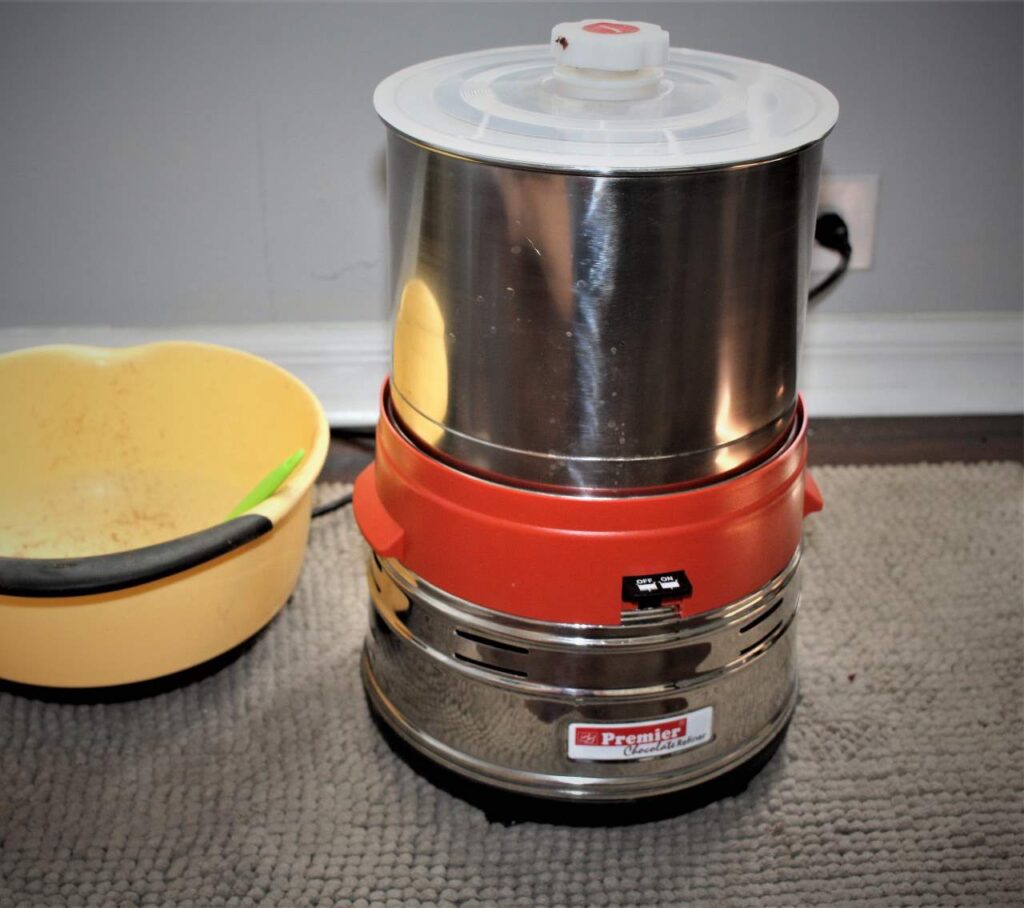
Tempering/Molding
- Always wear an apron or clothes you do not mind getting dirty. You will likely end up with permanent chocolate stains on whatever you have on.
- Prior to pouring chocolate out of your melanger, scrape clean the side you will pour from. This ensures the smooth chocolate will not become gritty by coming into contact with cacao that stuck to the side in the process (and is likely less refined.
- The tempering process is impacted by the temperature of your workspace. I am cheap and don’t like to run the air conditioning in my Florida home more than needed. Thus, tempering takes much longer in the summer (when my kitchen is around 80 degrees) than in the winter (when my kitchen is 68 degrees).
- Once chocolate is poured into molds, shake vigorously to release any air bubbles. This doesn’t matter too much unless you are trying to impress others with the beauty of your chocolate.
What is your experience with making small-batch chocolate? Do you have any favorite cacao beans? If there are any specific beans you would like to see reviewed, feel free to leave a note in the comments section!
Looking for some pre-roasted cacao? Although we won’t be at the Orange City, IA farmer’s market this summer (2025), we’ll be selling extra produce at our roadside stand in Alton. Feel free to reach out if you’re looking for anything in particular! We can be reached at [email protected].
*For those unfamiliar, the Behmor Coffee Roaster is used by many small-batch chocolate makers for roasting their beans. The Chocolate Alchemist website provides roasting tips for many of its beans, tailored to this appliance.

